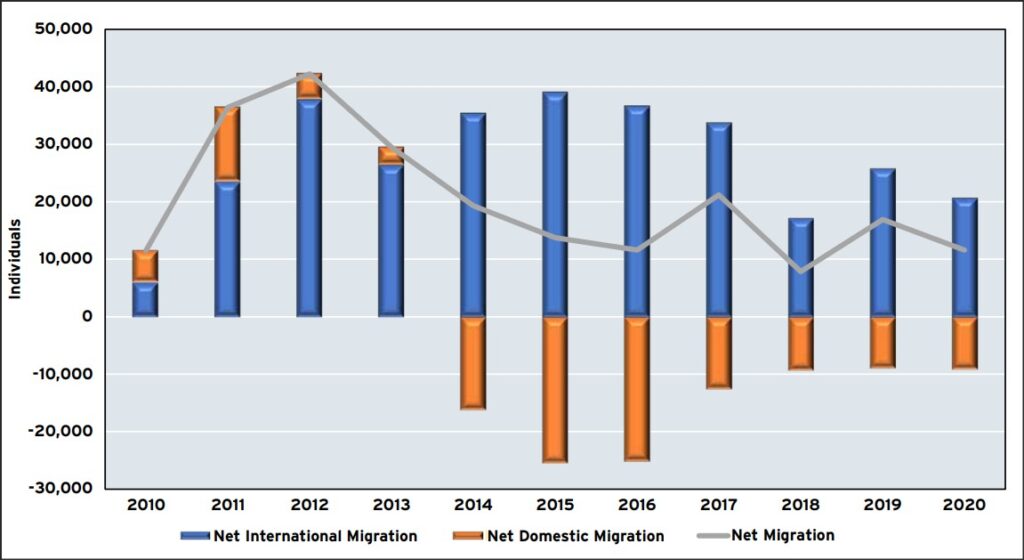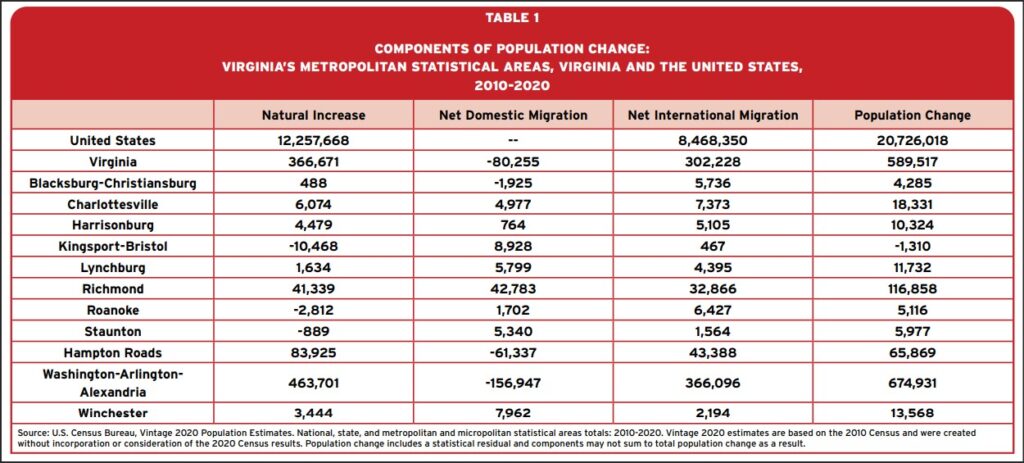
by James A. Bacon
Over the decade between 2010 and 2020, Virginia lost more than 80,000 inhabitants through domestic out-migration (a figure that captures the number of people moving across state lines within the United States). But it more than offset that loss through an international in-migration of roughly 300,000, according to data published in the “2021 State of the Commonwealth Report” by the Dragas Center for Economic Analysis and Policy at Old Dominion University.
When broken down by metropolitan area, it turns out that the net domestic out-migration was concentrated in the Northern Virginia and Hampton Roads metropolitan statistical areas. The Northern Virginia component of the Washington MSA lost a net of 157,000 domestic residents, while Hampton Roads bled 61,000. All of the state’s smaller metros, led by Richmond with 41,000, gained inhabitants through domestic in-migration.
A prime beneficiary of the domestic migration trends has been the Winchester metropolitan area, which receives special attention in the State of the Commonwealth report. Over the two decades between 2000 and 2020, notes the report, Winchester’s population increased at an annual compounded growth rate of 1.6%, for a gain of about 39,000 inhabitants. The largest contributor to Winchester’s growth by far was the Washington metro.

While Virginia has lost some allure for in-state inhabitants — “not a positive signal of the Commonwealth’s attractiveness,” observes the report — it still attracts a good share of international immigrants. The study does not delve into the question of why this is happening, but given the critical role of international migration in bolstering Virginia’s population and economy (and burdening its educational and welfare systems), this is a topic worth exploring.

Leave a Reply
You must be logged in to post a comment.